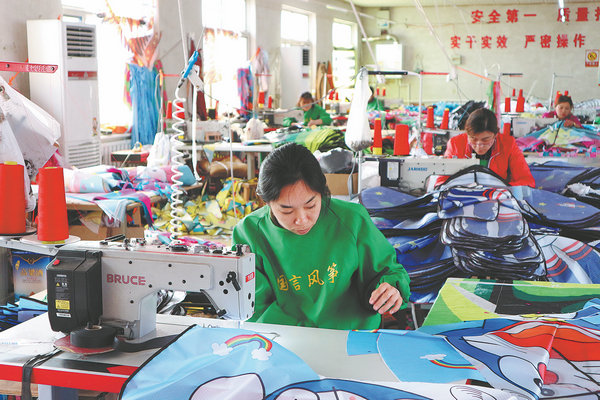

The city is home to 17 items of national-level intangible cultural heritage, including Weifang kites, woodblock printing and paper-cutting, and to more than 100 items at provincial and prefectural levels. It was named a UNESCO Creative City of Crafts and Folk Art in 2021. In November 2023, US travel magazine AFAR listed it as one of the 25 most exciting places around the world to visit this year.
Last year, Weifang applied for 137 million yuan ($19.3 million) for the protection and passing down of cultural relics and intangible cultural heritage, including the construction of seven museums.
Apart from its focus on culture, this city with a population of 9.4 million is developing high-tech and emerging industries, and its gross domestic product ranks fourth among prefectural cities in Shandong.
"Weifang boasts of a strong agricultural base, a solid industrial foundation, deep cultural heritage, and outstanding educational and geographical advantages. The interaction between people and the economy could create new drivers for high-quality development," says Liu Yun, Weifang Party chief.
With 37 of the 41 major national industrial categories, including all 31 manufacturing categories, Weifang's latest industries include new energy storage, the metaverse and industrial mother machines (machines used to manufacture machines).
Weichai, a leading Chinese power-train manufacturer based in Weifang, has applied new-generation information technology to its smart factories, and built the world's largest diesel engine manufacturing cluster.
Through the expanded use of robots, Weichai has greatly improved efficiency, and its production line for green energy-powered engines runs on one-fifth of the previous workforce.
In a smart factory belonging to electronics supplier Goertek, components are turned into high-end virtual reality equipment. Founded in 2001, this private tech company is a global leader in terms of its shipment of smart headphones, wearables and smart speakers, and in 2022 its revenues exceeded 100 billion yuan.
Weifang's booming vocational education provides strong support for the development of emerging industries. As a national vocational education innovation and development pilot zone, it has around 60 vocational schools and 300,000 students.
"By leveraging its strengths in culture, education and technology, Weifang can greatly expand its scope for high-quality development," says Wang Zhongwu, a professor at Shandong University.